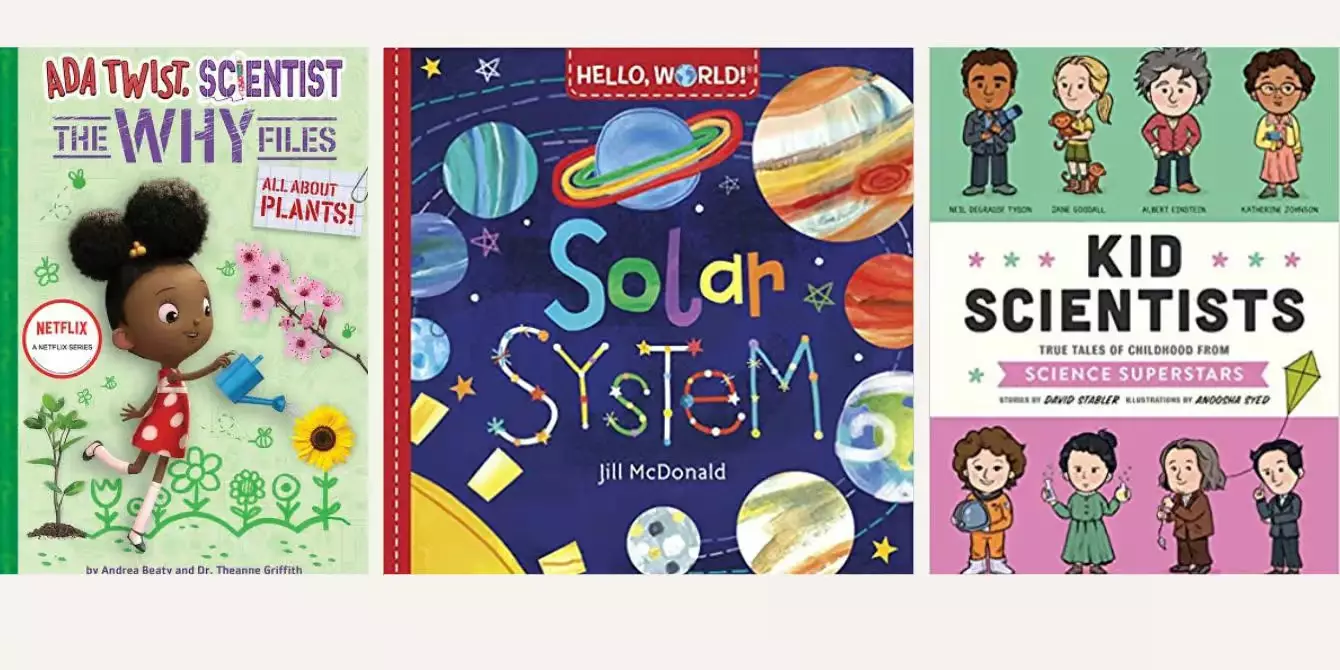As children, we are often filled with a sense of wonder—a curiosity that drives us to explore the world around us. This innate inquisitiveness is a crucial part of our development, as it lays the foundation for future learning and creativity. Parents and educators alike recognize the importance of fostering this natural interest in science and discovery. One of the most effective ways to nurture young scientists is through engaging literature that introduces complex topics in terms they can understand. This article aims to highlight some outstanding STEM books that not only captivate youngsters but can also provide adults with fresh insights and perspective.
Curiosity: The Key to Learning
From the moment toddlers marvel at a simple blade of grass to the endless cascade of “Why?” questions from inquisitive young minds, curiosity serves as the engine driving scientific exploration. By presenting scientific topics in relatable and entertaining ways, we can feed this curiosity. High-quality children’s literature offers pathways into complex scientific concepts, creating an environment where both parents and children can learn together. Imagine diving into the perplexities of quantum entanglement or the wonders of bioluminescence arm in arm with your child—these shared reading experiences can solidify a lifelong love of science.
Consider a charming book about a bat named Fiona, who grapples with her fear of flying but ultimately learns to navigate her world through echolocation. This adventure extends beyond mere storytelling; the book includes real information about echolocation and an interactive activity that encourages kids aged 3 to 7 to engage in hands-on learning. Such initiatives promote exploration, allowing children to implement concepts they’ve read about in their daily lives, fostering a sense of accomplishment and curiosity.
Another fascinating title focuses on the human body. Designed for ages 7 to 10, this anatomy book is characterized by its die-cut pages and vibrant illustrations, making complex concepts like the skeletal system and organ functions approachable. While the target audience is slightly older, the appealing graphics and engaging narrative will undoubtedly draw in younger readers. This accessibility opens up discussions about anatomy that families can enjoy together, ensuring no one feels left behind.
Books that contextualize scientific principles not only make learning enjoyable but also relevant. For instance, one book, aligned with the themes of “Ada Twist, Scientist,” explores botany through a scrapbook-like format. It encourages readers aged 5 to 8 to dive into the wonders of plant life while maintaining a light-hearted approach that mirrors children’s own exploration behaviors. By illustrating scientific concepts that connect to everyday experiences, these types of books transform abstract ideas into palpable lessons.
As our lives increasingly intertwine with science, especially in a post-pandemic world, it’s essential to introduce children to relevant topics like virology and vaccines in a manner that is both engaging and educational. Publications aimed at elementary-aged children can break down these complex subjects, using illustrations and narratives that demystify the science behind public health while cultivating empathy for those affected by these issues.
The excitement of discovering a book series that resonates with kids can be unparalleled. The stories of young genius Frank Einstein present foundational concepts of physics in a whimsical manner reminiscent of “Diary of a Wimpy Kid.” Targeted at children aged 7 to 11, this series intersperses humor with educational content, ensuring reluctant readers remain engaged. This balance of fun and information can create a positive feedback loop, where children find joy in reading and simultaneously expand their scientific vocabulary.
Additionally, the Kid Legends series takes on a unique narrative by focusing on the formative experiences of renowned scientists during their childhoods. Rather than presenting dry biographies, these stories emphasize the relevance of curiosity and creative thinking, showcasing how personal experiences can shape a future filled with discovery. This perspective is incredibly beneficial, as children can see their own trials and tribulations reflected in the lives of historical giants, encouraging them to persist in their search for knowledge.
Empowering Young Readers through Historical Context
No discussion of STEM literature would be complete without acknowledging the achievements of women in science. Highly illustrated texts celebrating the contributions of remarkable female scientists throughout history serve to empower young readers, particularly girls. By illuminating stories often overlooked in mainstream dialogue, these books provide a dynamic representation that can inspire the next generation of female thinkers.
Furthermore, for slightly older readers, a comprehensive look at the periodic table through engaging anecdotes and quirky facts can turn chemistry lessons into fascinating narratives filled with human interest. This approach invites the reader to visualize science not merely as a collection of facts and theories but as a lively and relevant aspect of everyday life.
The importance of igniting curiosity and scientific literacy in children cannot be overstated. Well-crafted STEM books serve as both educational tools and avenues for family bonding. As children embark on adventures through literature, they will not only learn about science but also discover the resilience, creativity, and critical thinking that define an inquisitive mind. Through engaging storytelling and interactive activities, we pave the way for future generations to be both scientifically literate and passionate about the world they inhabit.

